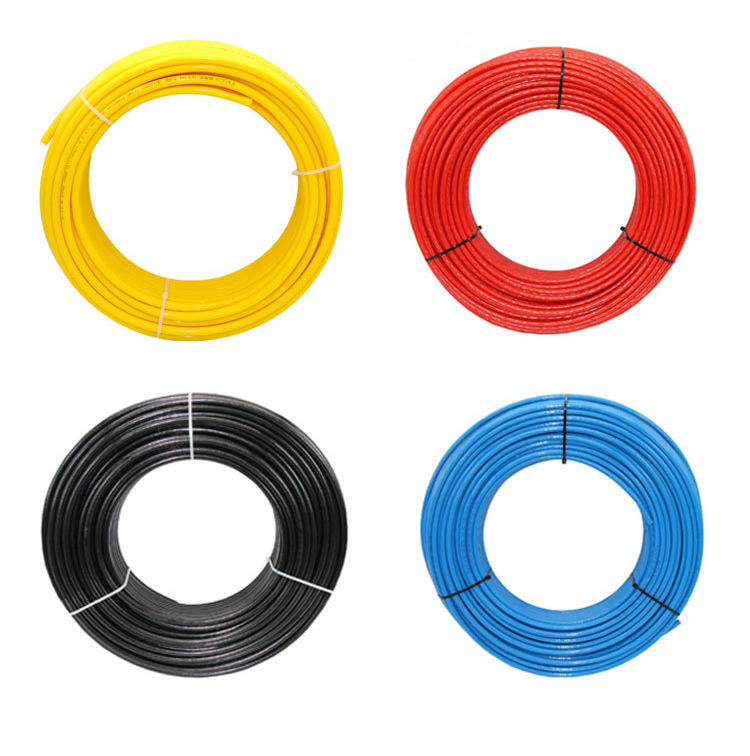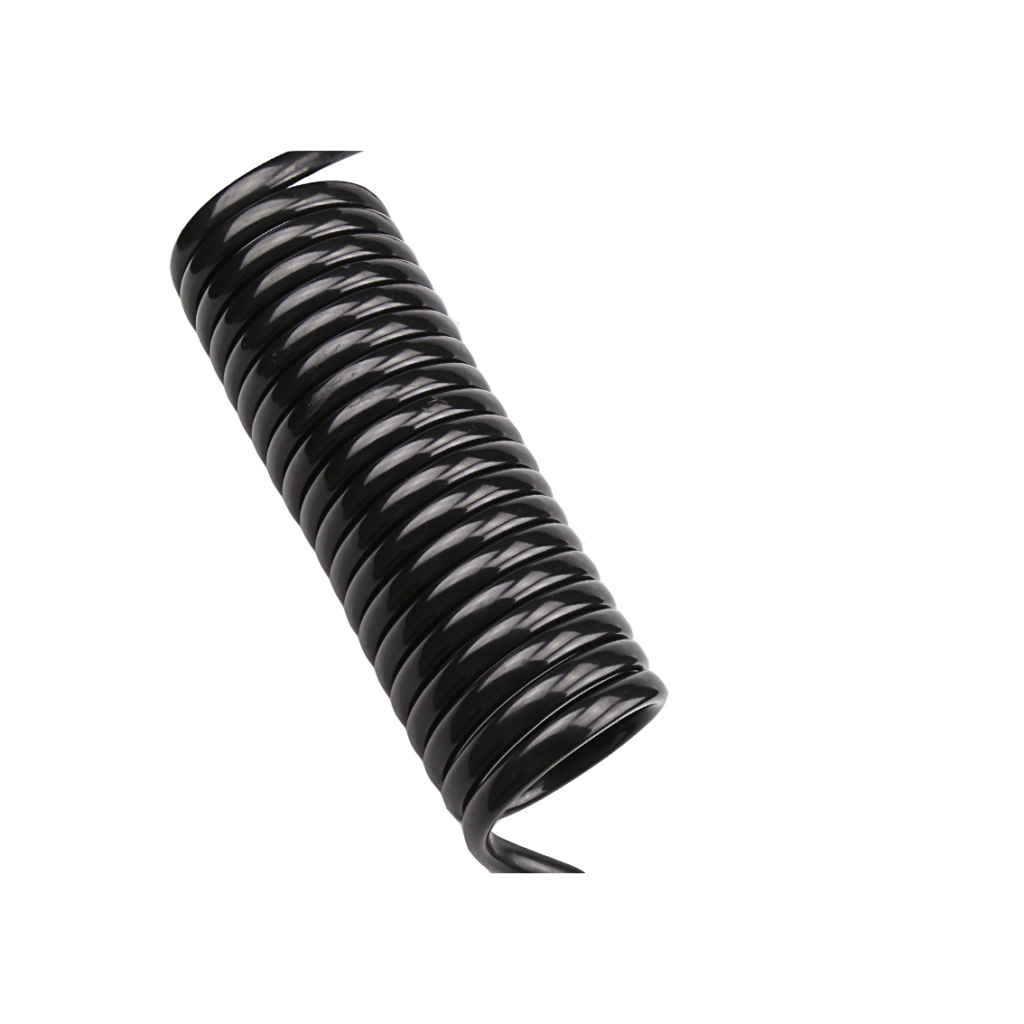Nylon tubing is an essential component in various industries, known for its strength, flexibility, and resistance to environmental factors. Understanding the composition and properties of nylon tubing is crucial for selecting the right type for your specific applications. In this article, we will explore what nylon tubing is made of, its manufacturing process, key properties, applications, and troubleshooting tips, ensuring you have all the information you need to make informed decisions.
Table of Contents
ToggleWhat is Nylon Tubing?
Nylon tubing is a type of plastic tubing made from nylon, a synthetic polymer belonging to the polyamide family. It is widely used in applications that require durability and reliability, such as pneumatic systems, automotive fuel lines, and medical devices. The unique properties of nylon make it an ideal choice for a variety of applications, ensuring that it meets the demands of different industries.
What Are the Main Components of Nylon Tubing?
1. Chemical Composition
Nylon is primarily composed of long chains of repeating units known as amide groups. The most common types of nylon used in tubing include:
- Nylon 6: This type is produced from a single monomer, caprolactam. The polymerization process involves heating caprolactam to initiate a ring-opening reaction, resulting in a flexible and impact-resistant material. Nylon 6 is known for its excellent tensile strength and is often used in applications where flexibility is required.
- Nylon 66: This variant is synthesized from two different monomers: hexamethylenediamine and adipic acid. The polymerization process for Nylon 66 involves a condensation reaction, which results in a material that offers higher strength and thermal resistance compared to Nylon 6. This makes Nylon 66 suitable for applications that require greater durability and resistance to heat.
- Nylon 11: Made from the polymerization of 11-aminoundecanoic acid, Nylon 11 is a bio-based nylon that offers excellent flexibility and chemical resistance. It is particularly valued in applications requiring high performance in harsh environments, such as in the automotive and aerospace industries.
- Nylon 12: Similar to Nylon 11, Nylon 12 is produced from lauric acid and is known for its low moisture absorption and excellent chemical resistance. It is often used in applications where dimensional stability is critical, such as in fuel lines and pneumatic systems.

2. Manufacturing Process
The production of nylon tubing involves two primary processes: polymerization and extrusion.
- Polymerization: The first step in creating nylon tubing is the polymerization of the monomers. In the case of Nylon 6, caprolactam is heated to a high temperature, causing it to polymerize into long chains of nylon. For Nylon 66, the two monomers are combined in a controlled environment to facilitate the condensation reaction. This process can take several hours and requires precise temperature and pressure control to ensure the desired molecular weight and properties of the nylon.
- Extrusion: Once the nylon is polymerized, it is melted and forced through a die to create the desired shape of the tubing. The extrusion process allows for the production of nylon tubing in various diameters and wall thicknesses, catering to different application needs. After extrusion, the tubing is cooled, cut to the required lengths, and may undergo additional processes such as annealing to enhance its properties.
What Are the Key Properties of Nylon Tubing?
1. Strength and Durability
Nylon tubing is renowned for its impressive tensile strength, which allows it to withstand significant pressure and stress. Depending on the specific type and thickness, nylon tubing can handle pressures up to 150 psi or more. This strength makes it ideal for applications in pneumatic systems, where reliable performance is critical.
2. Chemical Resistance
One of the standout features of nylon tubing is its resistance to a wide range of chemicals, including oils, fuels, and solvents. This property is essential in applications where the tubing may come into contact with aggressive substances. However, it is important to note that nylon is not resistant to strong acids and bases, so careful consideration should be given to the specific chemicals involved in your application. Always consult compatibility charts or conduct tests to ensure that nylon tubing will perform adequately in your specific environment.
3. Temperature Resistance
Nylon tubing can perform well across a range of temperatures, typically from -40°F to 212°F (-40°C to 100°C). This temperature resistance makes it suitable for both low and high-temperature applications, ensuring that it maintains its integrity and performance under varying conditions. In applications where extreme temperatures are expected, it is crucial to select the appropriate type of nylon tubing to avoid issues such as softening or brittleness.
4. Flexibility and Lightweight
Nylon tubing is lightweight and flexible, making it easy to install and maneuver in tight spaces. Its flexibility allows it to bend without breaking, which is particularly beneficial in applications where tubing needs to navigate around obstacles or fit into compact areas.

What Are the Applications of Nylon Tubing?
Nylon tubing is utilized across various industries due to its unique properties. Here are some common applications:
- Pneumatics: In pneumatic systems, nylon tubing is used for air and fluid transfer. Its lightweight and flexible nature allows for easy installation and routing, while its strength ensures reliable performance under pressure.
- Automotive: Nylon tubing is often found in fuel lines, brake lines, and other critical components where durability and chemical resistance are essential. Its ability to withstand exposure to fuels and oils makes it a preferred choice in automotive applications.
- Medical: In the medical field, nylon tubing is used in devices such as catheters and IV lines, where sterility and reliability are crucial. The chemical resistance of nylon also makes it suitable for applications involving various medical fluids.
- Industrial Applications: Nylon tubing is commonly used in various industrial applications, including robotics, packaging machinery, and fluid handling systems. Its versatility allows it to be adapted for different uses, making it a valuable material in manufacturing processes.
How Does Nylon Tubing Compare to Other Tubing Materials?
When comparing nylon tubing to other materials like PVC, polyurethane, and PTFE, several factors come into play:
- PVC: While PVC is more affordable, it lacks the flexibility and temperature resistance of nylon. Nylon tubing is often preferred in applications requiring durability and performance under varying conditions.
- Polyurethane: Polyurethane tubing is more flexible than nylon but may not offer the same level of chemical resistance or temperature stability. Nylon is generally a better choice for applications where these properties are critical.
- PTFE: PTFE tubing is highly resistant to chemicals and extreme temperatures but is often more expensive and less flexible than nylon. Nylon tubing provides a balance of performance and cost-effectiveness, making it a popular choice in many applications.

Troubleshooting Common Issues with Nylon Tubing
Despite its many advantages, nylon tubing can encounter issues over time. Here are some common problems and tips for troubleshooting:
- Kinking: If nylon tubing kinks, it can restrict flow. To prevent kinking, ensure that the tubing is not bent beyond its minimum bend radius during installation. Use proper fittings and supports to maintain the tubing’s shape.
- Leaking: Leaks can occur at connections if fittings are not properly secured. Regularly check fittings and connections for tightness and replace any damaged components. Using appropriate thread sealants or O-rings can help prevent leaks.
- Degradation: Exposure to harsh chemicals or extreme temperatures can degrade nylon tubing. Always verify compatibility with the substances being transported and consider using protective measures, such as insulation or shielding, if necessary.
- Discoloration or Brittleness: Over time, nylon tubing may become discolored or brittle due to UV exposure or prolonged contact with certain chemicals. If you notice these signs, it may be time to replace the tubing to ensure continued performance.
Conclusion
Understanding what nylon tubing is made of and its unique properties can significantly impact your choice of materials for various applications. With its strength, chemical resistance, and temperature stability, nylon tubing is a reliable option for pneumatic systems, automotive applications, and medical devices. By considering the insights shared in this article, you can make informed decisions that enhance the performance and reliability of your systems.

